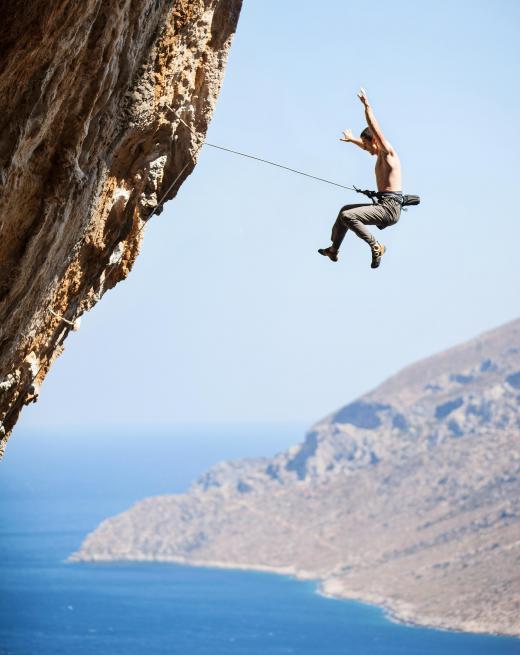Abseiling, from the German word “abseilen” meaning "to rope down," is the process of sliding down a rope under controlled conditions. Known as rappelling in the United States, abseiling has long been used in canyoneering, rock climbing, caving, and mountaining to descend slopes or cliffs that are too steep to simply hike down. In recent years, however, abseiling has become a popular sport in its own right.
Abseiling can be a dangerous activity, especially for inexperienced or unsupervised participants. Many seasoned climbers actually view abseiling as a more dangerous process than the climbing itself since the ropes must constantly bear the full weight of the participant. Moreover, the ropes often jam or get sliced through by sharp edges and rocks. Many climbing accidents actually occur while abseiling.

Because of the potential dangers inherent to the sport, participants should increase their safety by wearing specialized gear such as climbing helmets, boots, gloves, elbow pads, and knee pads. Low-stretch static ropes should be used to allow easier handling and to reduce bouncing, and a comfortable climbing harness should be worn around the waist to secure the descender. The descender is a friction hitch or another friction device which allows the rope to be paid out in a controlled manner.

Abseiling is utilized in numerous sports for a variety of reasons. Rock climbers generally use it to return to the base of a climb or to reach a new route. Canyoneers usually use abseiling techniques to travel down cliffs or waterfalls when simple hiking or jumping is impossible. Cavers use this method to reach underground pitches. Recreational abseilers, however, just enjoy the descent and return to the top of the cliff to abseil down the slope again.

A form of abseiling called “rapp jumping” is gaining in popularity for the more adventurous souls. Instead of the ropes being attached at the stomach, they are attached at the back. Participants then walk or run down the cliff while facing the bottom. "Don't look down" is not an option. Most participants claim the adrenaline rush is even greater during rapp jumping.

Abseiling techniques are also used for more practical reasons. Industrial workers use abseiling methods to access areas of tall buildings or structures that need cleaning, maintenance, inspection, or construction. Industrial abseiling is considered a safe and cost effective alternative to scaffolding or powered access cherry pickers and scissor lifts. Wilderness rescues and paramedic operations sometimes require emergency workers to abseil from a helicopter to reach the injured party and extract them from danger.
